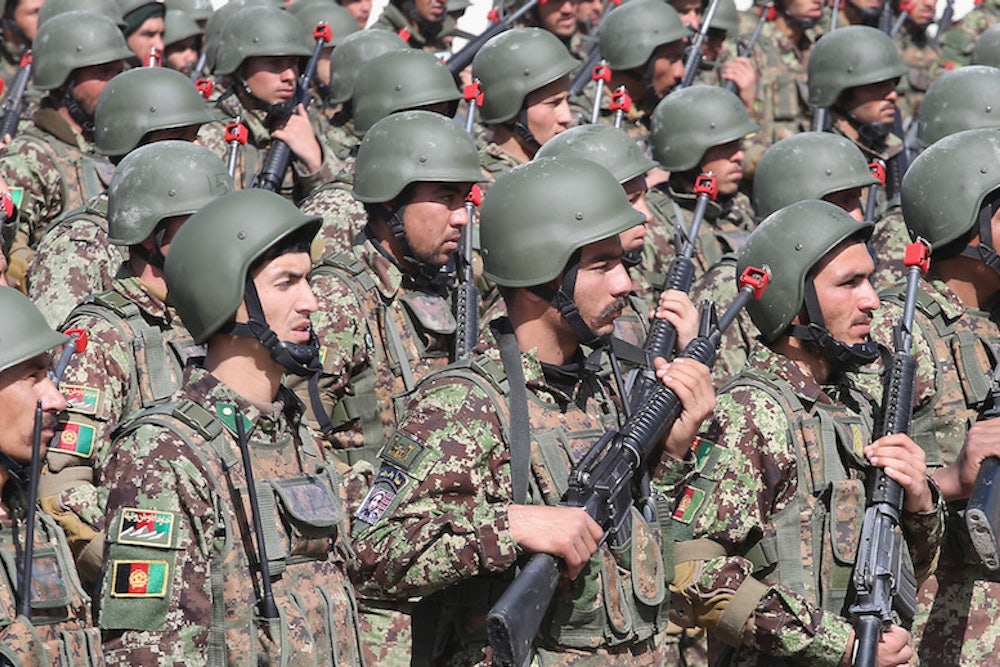Each month, the U.S.-led International Security Assistance Force (ISAF) rates Afghan security forces on a euphemistic scale of “fully capable” to “developing” and assesses their ability to “engage the enemy in combat”—that is, to stave off Taliban advances after U.S. troops leave. The Afghan army and police are graded on leadership, training, attrition, and other qualities categories. ISAF compiles the findings into a quarterly report and shares the executive summary with the Special Inspector General for Afghanistan Reconstruction (SIGAR), and thus, with the public.
They used to, anyway. Not anymore.
With the majority of U.S. combat troops set to withdraw from Afghanistan by the end of 2014, SIGAR released its final report of the year to Congress. In it, they revealed that ISAF had decided to classify the findings of the Regional Command Afghan National Security Forces Status Report (RASR). Until now, SIGAR had used the assessment report as one of their main tools to justify the $61.5 billion spent building, training, equipping, and sustaining the Afghan National Security Forces (ANSF).
The military gave no reason for the sudden secrecy, only issuing the following statement:
Last month, one of the IJC [ISAF Joint Command] theater disclosure officers reviewed the "Executive Summary' portion of the RASR and determined the classification was higher than the original "NATO/ISAF UNCLASSIFIED". Specifically, the portions that discussed any of the ANSF capabilities (such as issues) was classified at least Restricted. The tables that listed the count of units by rating (Fully Capable, Capable, etc.) was classified "SECRET".
SIGAR has reported on the RASR findings for the past six quarters without incident, making the military’s recent decision appear emblematic of a larger issue of over-classification in government. According to the Information Security Oversight Office, the U.S. government spent over $11.6 billion in 2013 maintaining its classified documents, adding 58,794 new documents to the pool of secret information.
SIGAR noted that this classification comes just months after an Afghan soldier shot and killed Maj. Gen. Harold J. Greene, marking the first death of a U.S. Army general since Vietnam.
Supporting Afghanistan’s security forces has been the most expensive part of the Afghanistan reconstruction. While Congress and government officials may still request classified briefings on the RASR executive summaries, SIGAR is now limited in its ability to report on the successes and failures of the army and the police to the American public.
